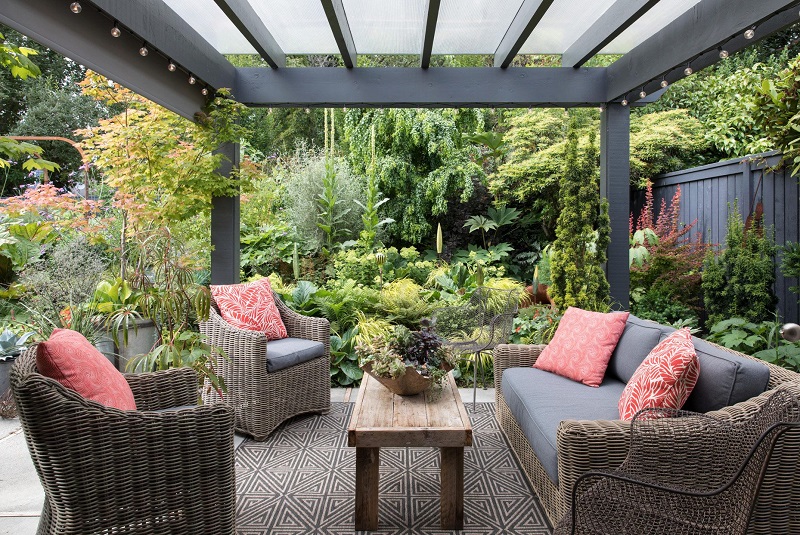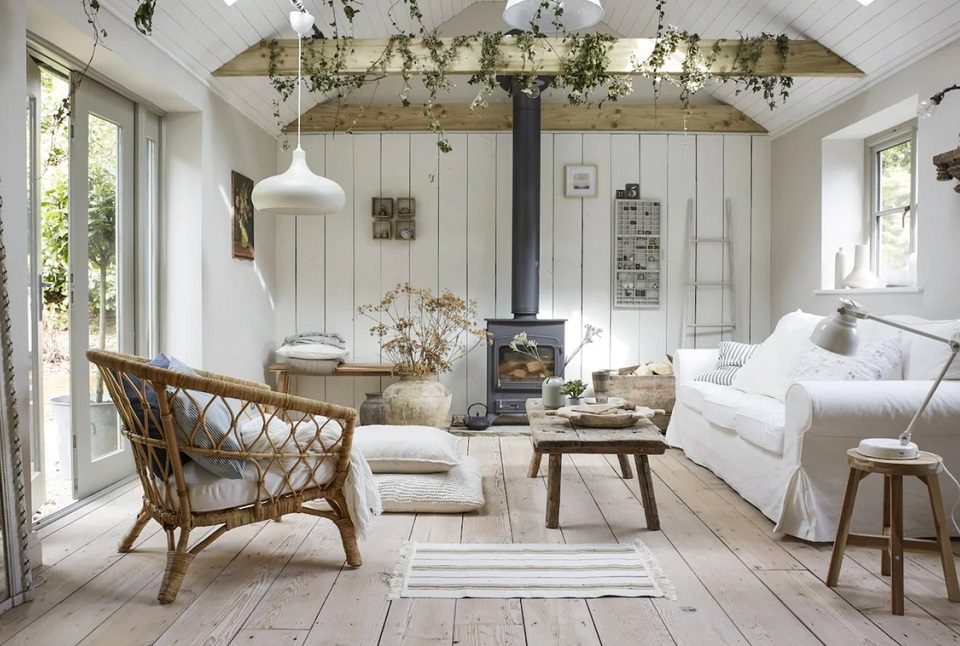What is a Covered Outdoor Area Called? Unraveling the Enigma of Outdoor Shelters

Advantages and Disadvantages of Buying an Existing Business
August 12, 2023
What is the Meaning of Rental Business?
August 15, 2023Imagine stepping outside to enjoy the fresh air and beautiful scenery, all while being shielded from the elements. A covered outdoor area provides the perfect solution, allowing individuals to experience the best of both worlds. In this article, we will unveil the mystery behind these outdoor shelters, exploring their purpose, design variations, and the benefits they offer. So, get ready to embark on a journey of discovery as we unravel the enigma of covered outdoor areas and learn more about these wonderful spaces.
Table of Contents
ToggleUnderstanding Covered Outdoor Areas
A covered outdoor area, also known by various names, is a structure or designated space that provides protection from the rain, sun, and other weather conditions while still allowing individuals to enjoy the outdoors. These areas can vary in design, size, and purpose, catering to different needs and preferences. Whether it’s a cozy gazebo, a spacious patio, or an elegant veranda, these covered spaces serve as a sanctuary where one can immerse themselves in nature without worrying about the elements. If you’re looking for an outdoor space rental, a covered area might be the perfect option for your event or gathering.
Common Names for Covered Outdoor Areas
Covered outdoor areas are known by several names depending on their specific characteristics and regional variations. Let’s explore some of the most common names used to refer to these outdoor shelters:
1. Patio
A patio is a versatile covered outdoor area that is typically attached to the main structure of a house. It often features a solid roof and may be enclosed on one or more sides. Patios can be used for various purposes, such as outdoor dining, entertaining guests, or simply relaxing. They are a popular addition to many homes, providing an extension of the indoor living space into the outdoors.
2. Veranda
A veranda is an open-air, roofed platform that usually spans the front or side of a house. It is characterized by a wide, elevated space with a roof supported by columns or pillars. Verandas often feature a railing or balustrade and are designed to provide shade and shelter while offering a panoramic view of the surrounding landscape. They are commonly found in colonial-style homes and add a touch of elegance to the architecture.
3. Gazebo
A gazebo is a standalone structure characterized by an open design and a roof supported by pillars or posts. It is usually located in a garden or outdoor space and provides a sheltered area for relaxation or socializing. Gazebos can come in various shapes and sizes, from octagonal to rectangular, and are often adorned with decorative elements such as lattice walls or hanging plants. They are a popular choice for weddings, picnics, or as a focal point in a garden.
4. Pergola
A pergola is an outdoor structure that features an open roof supported by columns or beams. It is designed to provide partial shade while still allowing airflow and natural light. Pergolas are often used to cover a walkway, patio, or seating area, and can be adorned with climbing plants or fabric for added beauty and shade. They create a sense of architectural interest and provide a cozy and inviting space for outdoor activities.
5. Lanai
A lanai is a covered outdoor area commonly found in tropical regions, particularly in Hawaii. It is typically an open space attached to a house or building and may be partially enclosed with screens or windows. Lanais often feature a ceiling or roof to provide shade, making them ideal for enjoying the outdoors while staying protected from intense sunlight or rain. They are popular for entertaining guests or simply enjoying the tropical climate.
Design Considerations for Covered Outdoor Areas
Designing a covered outdoor area requires careful consideration of various factors to ensure functionality, aesthetics, and suitability for the intended purpose. Here are some key design considerations to keep in mind:
1. Purpose and Functionality
Before designing a covered outdoor area, it is important to define its purpose and functionality. Will it be used for dining, relaxation, or entertaining guests? Understanding the intended use will help determine the size, layout, and features required for the space. For example, a patio designed for dining may need to accommodate a table and chairs, while a gazebo designed for relaxation may require comfortable seating and a tranquil ambiance.
2. Climate and Weather Conditions
The local climate and prevailing weather conditions play a crucial role in the design of a covered outdoor area. Regions with significant rainfall may require a roof that provides full protection from the elements, while areas with intense sun exposure may benefit from a roof with adjustable shading options. Considering the climate and weather patterns will help determine the materials, roofing, and additional features needed to create a comfortable and enjoyable outdoor space.
3. Material Selection
The choice of materials for a covered outdoor area depends on factors such as durability, aesthetics, and maintenance requirements. Common materials include wood, metal, fiberglass, and even fabric. Each material has its own unique characteristics and can contribute to the overall look and feel of the space. For example, wood may provide a natural and rustic charm, while metal can offer a more modern and sleek appearance. It is important to select materials that not only complement the existing architecture but also withstand outdoor elements for longevity.
4. Lighting and Electrical Considerations
Proper lighting is essential for creating a welcoming and functional covered outdoor area. Incorporating lighting fixtures such as overhead lights, sconces, or string lights can enhance both the ambiance and practicality of the space. Additionally, considering electrical outlets for appliances, speakers, or entertainment systems may be necessary depending on the planned use of the area. Proper planning and coordination with an electrician will ensure a well-lit and functional outdoor space.
Benefits of Covered Outdoor Areas
Covered outdoor areas offer numerous benefits that enhance the overall outdoor experience. Let’s explore some of the key advantages:
1. Protection from the Elements
One of the primary benefits of covered outdoor areas is the protection they provide from the elements. Whether it’s shielding from rain, sun, or wind, these structures allow individuals to enjoy the outdoors without being at the mercy of unpredictable weather conditions. This means you can still host a barbecue, relax with a book, or sip your morning coffee outside, rain or shine.
2. Extended Living Space
Covered outdoor areas effectively extend the living space of a home. They provide additional room for relaxation, entertaining guests, or engaging in outdoor activities. With a well-designed covered outdoor area, you can create an inviting space that seamlessly integrates with your indoor living areas, enhancing your overall quality of life.
3. Increased Property Value
Investing in a covered outdoor area can significantly increase the value of your property. These structures are sought after by homebuyers who appreciate the added functionality and aesthetic appeal they bring. A well-designed and well-maintained covered outdoor area can make your property stand out from the competition and attract potential buyers.
4. Versatility of Use
Covered outdoor areas are highly versatile and can be customized to suit various needs and preferences. Whether you want a serene space for personal relaxation or a lively area for socializing and entertaining guests, these structures can accommodate a wide range of activities. With the right furniture, lighting, and decor, you can create a unique and inviting outdoor haven that reflects your style and personality.
5. Health and Well-being
Spending time in nature has been proven to have numerous health benefits, both physical and mental. Covered outdoor areas allow individuals to connect with the natural environment, promoting relaxation, stress reduction, and improved overall well-being. Additionally, exposure to natural light helps regulate circadian rhythms and promotes vitamin D production, which is essential for optimal health.
Conclusion
Unveiling the mystery of covered outdoor areas has revealed the wonderful opportunities they offer. From the various names they are known by to the design considerations and benefits they provide, these structures truly enhance our outdoor experiences. Whether you prefer a patio, veranda, gazebo, pergola, or lanai, a covered outdoor area allows you to enjoy the beauty of nature while staying protected from the elements. So, why not embark on a journey of creating your own outdoor sanctuary and relish the best of both worlds?
Frequently Asked Questions (FAQs)
- Are building permits required for constructing a covered outdoor area?
The requirement for building permits varies depending on local regulations and the specific design of the covered outdoor area. It is advisable to consult with local authorities or a building professional to determine if permits are necessary.
- Can a covered outdoor area be added to an existing structure?
Yes, it is often possible to add a covered outdoor area to an existing structure, such as a house or building. However, the feasibility and design considerations may vary depending on factors such as structural integrity, available space, and architectural compatibility.
- How much does it cost to build a covered outdoor area?
The cost of building a covered outdoor area can vary significantly depending on factors such as size, materials, design complexity, and additional features. It is recommended to obtain quotes from reputable contractors or professionals to get an accurate estimate based on specific requirements.
- How should I maintain a covered outdoor area?
Proper maintenance is essential to ensure the longevity and aesthetics of a covered outdoor area. Regular cleaning, inspecting for any damage or wear, and addressing any issues promptly will help preserve the structure and materials. It is also advisable to follow manufacturer recommendations and seek professional assistance when needed.
- Can a covered outdoor area be heated or cooled?
Yes, depending on the design and intended use, covered outdoor areas can be equipped with heating or cooling elements to enhance comfort throughout the year. Methods may include portable heaters, ceiling fans, misting systems, or even full HVAC installations, depending on the size and complexity of the covered area.
Warning: Trying to access array offset on value of type null in /home/speakyma/public_html/checkyourhud.com/wp-content/themes/betheme/includes/content-single.php on line 286


